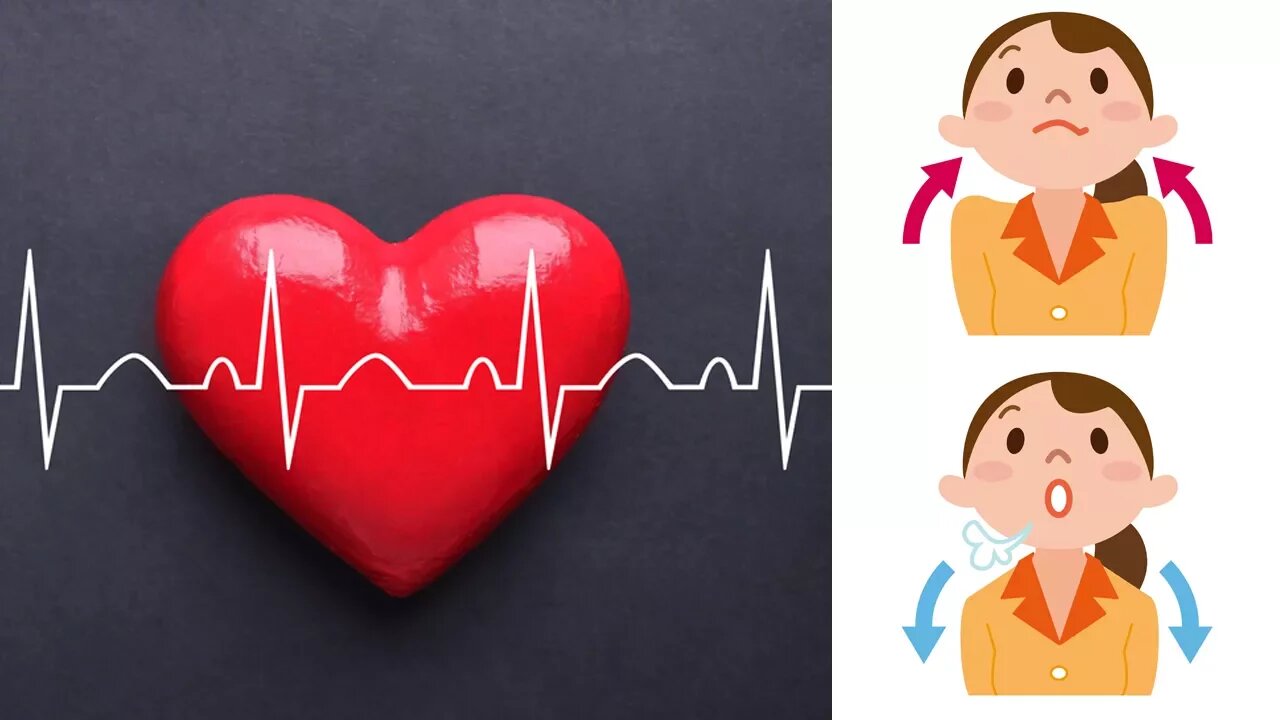Premium Only Content

How to Calm a Fast Heartbeat (Tachycardia)
Cardiac arrhythmia is a condition where the rhythm of the heartbeat isn’t normal. When your heart rate accelerates, we call it tachycardia—the swift heart. When your heartbeat falls, we call this condition bradycardia—the slow heart.
Tachycardia happens suddenly and its occurrence isn’t connected to any physical effort. It can be a symptom of a more serious heart condition, for instance a heart attack.
People that suffer from hyperthyroidism, stress, or fatigue can develop tachycardia.
Most importantly, when the heart rate accelerates rapidly, it’s time to call for medical help so that the person will have time (in the event of a heart attack) to arrive at the emergency room for proper medical attention.
With that in mind, let’s learn two ways to control your heart rate in under a minute whenever you experience intense fear or elevated stress levels.
Keep in mind that if your heart rate happens to accelerate due to the beginning of a stroke, then calling 911 is the recommended course of action. That includes making sure that you won’t harm yourself while trying to control your tachycardia.
Therefore, these methods are best suited for people suffering tachycardia due to problems with panic or anxiety attacks.
1. Use cold water
Fill a sink or bowl with ice and cold water.
When you feel a sudden increase in your heart rate and/or your pulse, take a deep breath, hold it, and submerge your face in the cold water.
Keep your face underwater for as long as possible. The cold water stimulates the nerves necessary for the brain to calm you and slow down your heart, thus ending the tachycardia.
This trick is knows as the “diver’s reflex” and should be used sparingly. Repeat the process until you feel calmer.
2. Control your breathing
By controlling your breathing, you can reduce your hear rate and eliminate tachycardia.
First, take the deepest breath possible. Next, quickly release all the air in your lungs.
The most important part of this exercise is to breathe at your lungs’ limit to force your heart rate to return to normal.
Remember that breathing this way is more intense than simply taking deep breaths, so doing this exercise for a long time can be harmful.
So, do this exercise for no more than one minute in order to alleviate the tachycardia and return your heart to its normal rhythm.
Resource(s):
http://www.prevention.com/health/13-tachycardia-treatments-to-calm-your-rapid-heartbeat
Facebook: https://bit.ly/38BWbw3
Pinterest: https://bit.ly/2Irvwa6
Disclaimer: The materials and the information contained on Natural Cures channel are provided for general and educational purposes only and do not constitute any legal, medical or other professional advice on any subject matter. These statements have not been evaluated by the FDA and are not intended to diagnose, treat or cure any disease. Always seek the advice of your physician or other qualified health provider prior to starting any new diet or treatment and with any questions you may have regarding a medical condition. If you have or suspect that you have a medical problem, promptly contact your health care provider.
-
 3:55
3:55
Natural Cures
1 year ago $0.91 earnedDrink This Tea Tonight to Flush Out All The Toxins from the Body
3.68K4 -
 3:13:59
3:13:59
SilverFox
6 hours ago🔴LIVE - OBLIVION IS BETTER THAN SKYRIM NOW
37.6K1 -

SpartakusLIVE
10 hours agoDuos w/ StevieT || Trios or Quads Later?!
31.3K1 -
 7:19:12
7:19:12
OhHiMark1776
10 hours ago🟢04-27-25 ||||| Halo Multiplayer Rumble: No. 13 ||||| Halo MCC (2019)
88.7K -
 2:12:28
2:12:28
TheSaltyCracker
8 hours agoThey Killed Her ReeEEEe Stream 04-27-25
158K320 -
 2:33:51
2:33:51
vivafrei
18 hours agoEp. 261: Criminal Judges ARRESTED! Election in Canada! Santos Sentenced! RFK Jr. & Autism & MORE!
196K133 -
 6:24:31
6:24:31
Amish Zaku
11 hours agoRumble Spartans "The One Year" Event
50.6K1 -
 7:28:41
7:28:41
Illyes Jr Gaming
8 hours agoLaid Back Sunday Night Warzone Stream!
22.4K -
 1:51:18
1:51:18
Nerdrotic
10 hours ago $7.41 earnedDiscoveries From Graham Hancock's "Fight for the Past" | Forbidden Frontier 099
51.6K12 -
 1:09:42
1:09:42
Sarah Westall
9 hours agoHidden Tech Resembles Star Trek: Malaysian Airline, Portals & Wormholes w/ Ashton Forbes
58.8K30